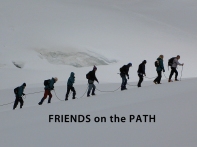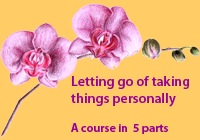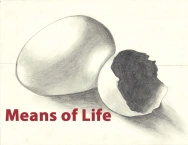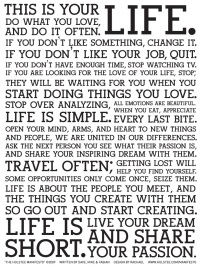There is a perfect way to explain the phenomenon of stress: Take a stress ball – or just make a fist – and squeeze it as much as you can. Then let go and slowly open the grip. Then do it again – squeeze as tight as you can, hold it for ten seconds with all your might – and the let go. It is becoming perfectly clear which one of the two positions is more natural. I then go on to demonstrate that you cannot solve resistance by putting more pressure on the clenched fist, but that you have to initiate a letting go.
And that is all one really needs to know about stress and how to resolve it.
A stress reaction is the primal survival mechanism of any sentient being. Whenever we encounter a dangerous situation, we have to decide very quickly to either fight back or to make a runt. There are primary stressors that directly threaten survival , like hunger, thirst or lack of oxygen, and then there are many other external and internal factors, that may cause a stress reaction.
The important thing to know about stress is that a small part of the brain, called the amygdala, co-ordinates a stress-response that affects the whole organism. There are several pathways, but the most important one is the neuro-endocrine response that affects all the endocrine glands of the body – like the pituitary, the thyroid, pancreas and adrenals. This is the pathway to provide the body with more energy to respond to the increased requirements. At the same time, there is another cascade unfurling through the central nervous system, which puts the brain, muscles and cardiovascular system on high alert and makes them ready for defense. A stress reaction affects each and every single cell of the body in terms of an altered pattern of energy distribution. During a stress reaction the circulatory system, the brain and the muscles receive more nutrients and oxygen, while the digestive system, the immune – and the reproductive system have to do with less.
Under normal circumstances a stress reaction lasts only for a few seconds. Once the dangerous situation is averted, the hormone cortisol from the adrenal gland is in charge of re-balancing the energetic needs.
It is easy to see now that a chronic stress reaction upsets the whole metabolism and function of the body. Like a system in overdrive, a result of a long-term chronic stress situation is pure exhaustion, which is characterized by low serotonin levels. What we call “depression”, is mostly a state of physical and mental exhaustion due to stress.
The thing is that stressors add up and many small reasons may have a disastrous effect.
There are stressors like noise, environmental toxins, social problems, financial challenges, everything that may happen in a family, what we eat and drink, bacteria, electromagnetic waves, pollution, cigarette smoke, alcohol, and many others. Moreover there are the so-called inner stressors, inner conflicts based on expectations and desires that keep us awake at night.
It is vitally important to recognise stress symptoms before they lead to a manifest damage of organs and their proper function. This can be easily detected if one is attuned to the language of the (inner) body and starts to recognise the very first symptoms of a stress-response : resistance. Indeed, stress is nothing but resistance, characterized by a contraction of the walls in arteries, which leads to an increased blood pressure and heart rate. We can feel this resistance – it is that sense of anxiety or nervousness that goes along with so many situations we are less than happy with. To recognise this inner resistance – this saying NO to a life situation, is the first and most important step in terms of resolving stress.
I never liked the expression “fight stress”. Try to fight stress and you strengthen it. The answer to deal with stress is letting go – that process of de-conditioning, of opening up and coming out of resistance.
The first step is always to recognise and acknowledge the different symptoms that point to a chronic stress reaction, like elevated blood pressure, palpitations, disturbances in the digestive tract, difficulties sleeping, being prone to infections, a sense of general exhaustion and irritation, just to mention a few of the most common physical complaints. The next step is to identify the stressors – like food, not enough exercise, an imbalanced life-style in general. The rule of the thumb is – one step after the other, simple things first and one issue at the time.
The pillars of rebalancing a stressed out individual is nutrition, relaxation, identifying the issues, becoming aware of emotional disturbances and conflicts and changing the general attitude to life in terms of acceptance as opposed to resistance.
And here we see the analogy to the work we do in terms of transcending the ego. The purpose of all interventions to alleviate the effects of a chronic stress response is to open up, to come out of the contraction and embrace life.
Letting go is the answer to holistic stress release.
(revised version, March 6th, 2011)
















Thank you Michaela!! Another excellent,valuable, insightful Posts.
-Jeff
Great ! Thank you Michaela
Thank you Machaela very well defined and simply put. It’s so easy to see and understand information, so why sometimes it’s so hard to put it into practice. I will continue to take one step at a time, and I must say every little step has helped tremendously.
Not sure if you ever looked up that book, as it describes stress in the same manner as you have and offers up some very specific meditation and energy flow patterns to open back up your own natural systems for healing. The Healing Code, by Alex Loyd and Ben Johnson
Thank you Randy. Its on my reading list.
The reason why it is so difficult sometimes, is two-fold. First, there is often some inner resistance to change. We are miserable, but at least it’s misery we know. Secondly, often stress-mamangement programs add to the stress – like work.out routines, or diets to lose weight. Its important to work with someone who can think holistically and find the one or two changes, that may not look much, but can make you feel a hell of a lot better.
The important thing is – know the symptoms and acknowledge that you are stressed. Then even a small change – like a 10 minutes walk per day – may be of great benefit.
Thank you for sharing.
When it comes to stress I would like to say that I am an expert myself. Firstly because I suffered a lot from stress, resulting in conditions like depression en burn-out. Secondly, because I read a few about subjects like this, trying to understand what was happening with me.
From this experience I can say that “letting go” is only way I found to let it go… 🙂
When I write this… I look a bit silly to me… but I can not find an other way of expressing it… Just let it go..
The real decision to let go only takes a split second… I gues it is in the period before this decision that the ego is doing what ego’s like to be doing.
In my case… at one point… I just got so tired that there was really other choice then to let go…. Bow… or brake…
Peace,
Raoef
For some reason it get harder for me to write… I just don’t see it… only afterwards I wonder… Did I write this? I believe that I wanted to write something else…
It should be… “it looks a bit silly to me” and “no other choice”
It’s perfect… 🙂
Thank you !